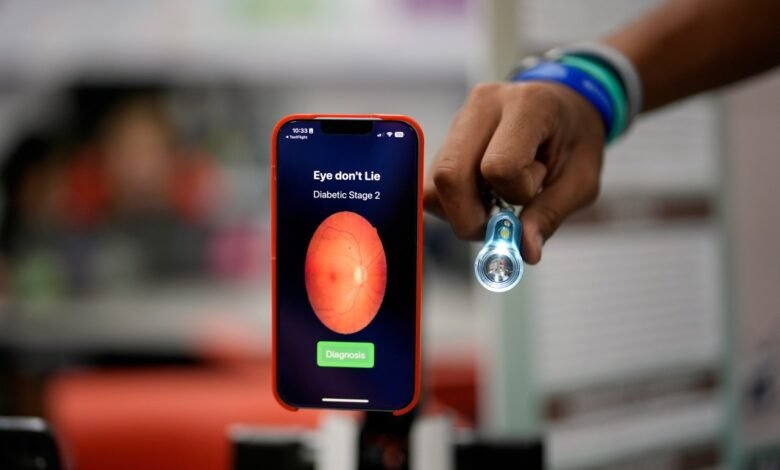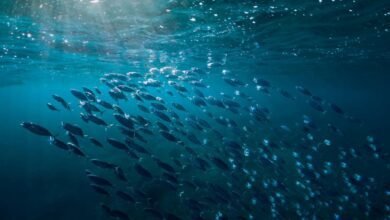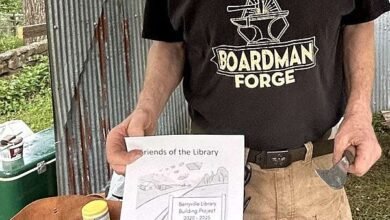Want to show your teachers appreciation? This top school gives them more freedom | YourCentralValley.com | KSEE24 and CBS47 KSEE24

BOCA RATON, Fla. (AP) — When teachers at the A.D. Henderson School, one of Florida’s top-performing schools, are asked how they manage to succeed, one answer is universal: They have autonomy.
Nationally, most teachers report feeling stressed and overwhelmed at work, according to a Pew Research Center survey of teachers last fall. Declining job satisfaction over the past two decades has accompanied a decline in teachers’ sense of autonomy in the classroom, according to a recent study from Brown University and the University at Albany.
But at this South Florida school, administrators allow their staff high levels of creativity in the classroom — and it works.
A public school of 636 students in kindergarten through eighth grade on the campus of Florida Atlantic University, Henderson scored in the top 1% to 3% in every subject and grade level on the state’s latest standardized tests, with the exception of sixth-grade math. series, where students were among the top 7%. In almost every subject, 60% or more of Henderson students score significantly above the state average.
“A lot of individual input is allowed in carrying out the activities we want to do in the classroom,” said Vanessa Stevenson, a middle school science teacher who is finishing her third year at the school. She plans to start an equine medicine course next fall, even though the school has no stables — she believes she will find a way.
“It’s a bit of trial and error because there’s nothing being handed to you saying, ‘Do it this way.’ You just have to figure it out,” she said.
Joel Herbst, superintendent of Henderson and its sister FAU High School, calls the faculty its “secret sauce” and argues that the school’s success can be duplicated anywhere — if administrators cede some control.
When that happens, he said, teachers create hands-on programs that help students “not just show their understanding, but gain more depth.”
“Give (teachers) the freedom to do what they do best, which is transmit knowledge, teach beyond the textbook,” he said.
Portland State University education professor Madhu Narayanan, who studies teacher autonomy, said independence has a high correlation with faculty morale and success. But autonomy must be combined with administrative support.
“It can’t be: ‘Here’s the classroom, here’s the textbook, see you in six months.’ These teachers have tremendous autonomy, but they feel lost,” he said.
‘THAT SOMETHING EXTRA’
Henderson emphasizes science, technology and math, using arts and humanities to help with these classes. About 2,700 families enter the drawing each year for 60 spots in Henderson’s kindergarten class and spots in other grades. There is no screening – some children who enter Henderson are prodigies, most are average students, and some have learning difficulties such as dyslexia.
The only adjustment is to comply with a Florida law that requires the student population at university-run “laboratory” schools to match the state’s demographics in terms of race, gender and income. As families sign up to participate, parental involvement is high – an advantage that Herbst and his team admit.
Selected kindergarten students are tested months before arrival so any needs can be met immediately.
“Some of them come in reading and some of them know five letters — and it’s not just reading, it’s all subjects,” said Lauren Robinson, deputy director of the elementary program. “Let’s provide every opportunity to close these gaps before they get bigger and bigger, rather than waiting until a certain grade level and saying, ‘Now let’s try to close these gaps.’ It’s the first day.
In Jenny O’Sullivan’s art and technology classroom, kindergarten students learn the basics of computer coding by guiding a robot through a maze. Fourth and fifth graders make videos celebrating Earth Day. Students learn design by building cardboard arcade games, like Skee-Ball, for their peers. Legos teach engineering.
Although her new classroom has state-of-the-art technology, she insists that these classes can be taught anywhere if the teacher is creative.
“My grandmother is from Louisiana and there’s a (Cajun) saying: ‘Lagniappe,’ that little extra thing,” O’Sullivan said. “I can be the lagniappe in (the student’s) education. Could you live without it? Yes. But would you like it? No.”
Working in small groups dressed in white coats and goggles, the sixth graders in Amy Miramontes’ Medical Detective class solve a mystery every day. They examined strands of rabbit muscle under a microscope, using safe chemicals to determine which neurological disease each animal had. They tested fake neurotoxins to determine which diseases afflicted their imaginary patients.
Miramontes hopes the course will not only spark students’ interest in medicine, but also implant the necessary knowledge in two years when they take the state’s eighth-grade science test.
“They are always learning by putting their hands on something,” Miramontes said. “If they make a mistake, that’s okay – we start over. But then we learned a big life lesson: we need to be very diligent.”
Marisha Valbrun, 12, chose Medical Detectives because she might want to be a doctor. She learned that although science is challenging, by seeking help she can overcome obstacles.
“I feel like if I asked anyone in this room for help, they could give you the right answer,” she said.
USING ART TO TEACH SCIENCE
Even in a school where teachers exude enthusiasm, elementary art teacher Lindsey Wuest stands out – she can’t sit still while describing how her classes center on science.
This afternoon, in her Science as Art class, Wuest and a visiting artist are showing third graders how to make clay dolls of endangered species—while also teaching the chemistry that explains why nail polish changes color. in the oven.
“We hope that students who love art can also develop a love of science,” she said. “Project-based learning stays with kids longer.”
Third-grader Maximus Mallow said that by working on his leopard bobblehead, he learned how the animal’s camouflage works.
“We have fun while creating things about science,” said the 9-year-old.
Henderson’s success leads to donations — and nothing shows that better than the high school’s drone program, which recently won a national competition in San Diego.
Henderson’s drone teams have a room to practice flying 3-by-3-inch (75-millimeter) four-rotor devices through an obstacle course, as well as flight simulators donated by the local power company.
The drone program is an opportunity to compete using physics and aeronautics learned in the classroom, said professor James Nance. While expensive equipment is a benefit, Nance said, drone classes can be taught on a budget. At a previous school, he took a flying course using PVC pipes and balloons.
Eighth-grader Anik Sahai reaches for his cellphone in Stevenson’s science classroom, an act in Henderson that usually means a trip to the office. But he is demonstrating an app he created that uses the camera to diagnose diabetic retinopathy, an eye disease that is a leading cause of blindness worldwide. It took first place in the state’s high school science fair and is being considered for commercial use.
The 14-year-old credits his success to his years at Henderson, starting in the preschool program.
“The teachers here are amazing,” he said. “They were trained on how to take us to the next level.”
___
Sharon Lurye contributed reporting from New Orleans.
___
Associated Press education coverage receives financial support from several private foundations. AP is solely responsible for all content. Find AP’s standards for working with philanthropies, a list of supporters, and funded coverage areas at AP.org.




